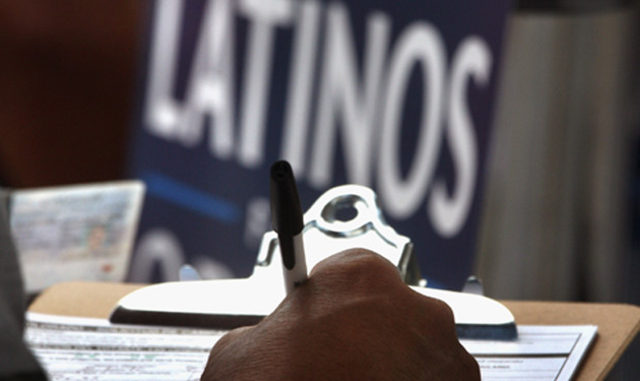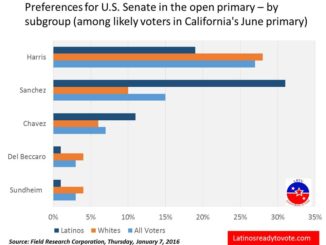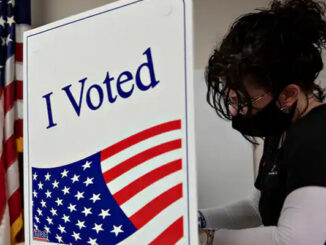
by
Republicans can’t escape the math.
The GOP won’t win back the White House in 2016 without garnering substantially more support from Hispanic voters than it received three years ago. That’s especially true in Colorado, Nevada and Florida, three swing states that are crucial to the party’s presidential prospects and include Hispanic voting blocs that are influential, sizable and growing larger with every election cycle.
Experienced political strategists estimate that the eventual Republican nominee needs to earn at least approximately 35 percent of the Hispanic vote in both Colorado and Nevada to compete for their Electoral College votes and at least 40 percent, if not 45 percent, of Hispanics in Florida. In 2012, Republican nominee Mitt Romney failed to hit these numbers, and lost all three states.
Republican insiders are worried they could be heading for a repeat defeat in these battlegrounds, despite all of the operational work the party did since 2012 to improve its standing with Hispanic voters. Why?
It’s not just that the summer front-runner for the GOP presidential nomination, Donald Trump, sports a miserable 15 percent favorable, 82 percent unfavorable image with Hispanics nationally. It’s that his support for ending birthright citizenship and forcibly rounding up and deporting the 11-12 million illegal immigrants living in the United States has been dominating the campaign. This is a recipe for political disaster in the general election.
“It becomes a litmus test issue, if you’re so argumentative and visceral,” said Floyd Ciruli, a nonpartisan pollster in Denver.
In other words, Hispanics are no different than other voters; they care about the economy first, and then issues like education and healthcare. They might even prefer Republican proposals on these topics over those offered by the Democrats. But if Hispanics think Republicans are hostile toward their community, which to many encompasses both legal and illegal immigrants, as well as their descendants, then they won’t grant them a hearing on anything else.
The same analysis was offered by multiple political strategists, of both parties, who are toiling in Colorado, Florida and Nevada and are veterans of several campaigns. These three states matter so much for Republicans because their party has a narrow path to 270 Electoral College votes, according to established regional political divisions that are expected to hold in 2016. There are paths that might exclude Colorado and Nevada, albeit unlikely paths, but none that exclude Florida.
For his part, Trump has vowed repeatedly that he will convert Hispanics into ardent supporters, contending that they will be attracted to his jobs agenda. Here’s a look at the numbers and what operatives on the ground in each state have to say about where things are headed in 2016.
Colorado. The Hispanic population here isn’t monolithic. In Southern Colorado, there are Hispanic families that date back four or five generations, or more, to before the territory was a part of the U.S. In greater Denver, the Hispanic community is comprised of recent immigrants from Latin America. In Northern Colorado, Hispanics lean slightly conservative.
Republicans can do well enough to win in the Centennial State with a generic immigration policy that is heavy on border security and opposed to granting citizenship to illegal immigrants. But embracing mass deportations and reducing citizenship rights is political kryptonite. Tone and engagement, say GOP operatives in Colorado, matters a great deal, and could determine whether Republicans have a shot with Hispanics in 2016.
According to Pew Research Center Study, President Obama beat Romney among Colorado Hispanics 75 percent to 23 percent, an improvement over his 2008 performance, when he beat Sen. John McCain, R-Ariz., there 61 percent to 38 percent. In the last three presidential elections, Hispanics’ share of the vote jumped from 8 percent, to 13 percent to 14 percent.
Florida. The Sunshine State is perhaps the most complicated of the three.
The Cuban vote has long been reliably Republican, but the younger generation has been more willing to vote Democrat. There has been an influx of Puerto Ricans, who are dependable Democratic voters. The population of immigrants from Latin and South America has diversified the Hispanic population further, and is another factor behind Florida becoming more competitive for Democrats in presidential contests.
Illegal immigration isn’t necessarily a problem here. But that doesn’t mean Florida Hispanics, most of whom are legal immigrants or decedents of legal immigrants, don’t interpret strident language directed at illegal immigrants as a shot at their communities. In 2012, Romney said that his policy for dealing with illegal immigrants was that they should “self deport” from the U.S.
Republican operatives in Florida who were focused on Hispanic outreach for Romney in 2012 said that comment caused Hispanics to tune Romney out on every other issue such that he only won 39 percent of their vote — low for the GOP by Sunshine State Standards. Obama won 60 percent of their vote, up from 57 percent four years earlier. Hispanics comprised 17 percent of the Florida electorate in 2012, up from 14 percent in 2008.
Dave Beattie, a Democratic pollster who specializes in Florida, described the impact of hardline immigration rhetoric on Sunshine State Hispanics this way: “Even though it’s not affecting their immigrant status, it’s a sense of, ‘You don’t like people like me.’”
Nevada. How important are Hispanics in terms of winning statewide? Long before Trump began advocating for mass deportations and an end to birthright citizenship, Sen. Dean Heller, R-Nev., donated previous campaign contributions from the New York businessman/entertainer to charity. Trump’s comments referring to Mexican immigrants as rapists were enough for him to distance himself from his fellow Republican.
The growth of the Hispanic electorate here, from 2004 to 2008, is larger percentage wise than in Colorado or Florida, emblematic of the bloc’s burgeoning influence, a surge fueled in part by the growth of Las Vegas’ hospitality industry. In 2004, Hispanics were a respectable 10 percent of the vote; by 2012 they comprised 18 percent. That year, Obama trounced Romney with these voters 70 percent to 25 percent.
As in Colorado and Florida, Republicans don’t have any realistic shot of winning the Hispanic vote in Nevada. But as in those states, they can boost their numbers enough to win Nevada’s six electoral votes if they reach out with the right tone. “Personalities matter,” said one veteran Silver State GOP operative advising a 2016 contender. “If our nominee can communicate specifically and personally with Hispanics we’ll win. If we nominate Donald trump we will lose.”
Disclosure: The author’s wife works as an adviser to Scott Walker.
David M. Drucker is Senior Congressional Correspondent for the Washington Examiner.



